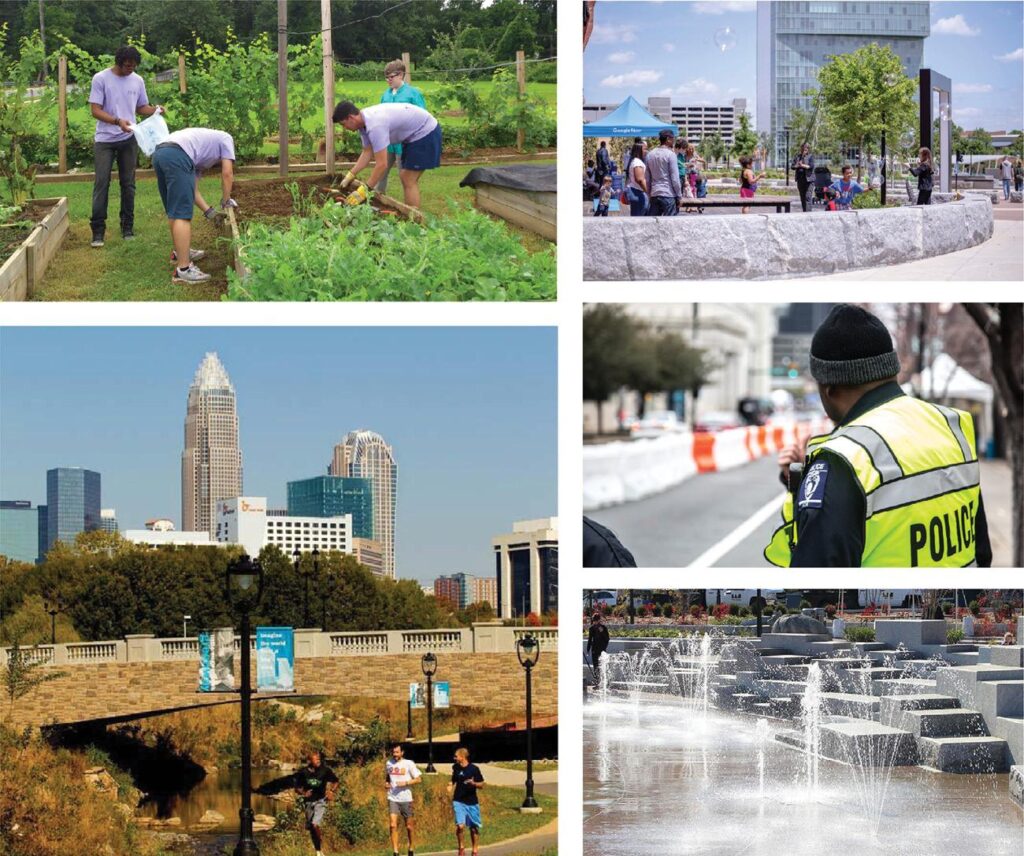Home / 03. Policy Framework / Goal 6: Healthy, Safe, and Active Communities
Plan Policy
Table of contents
Goal 6: Healthy, Safe, and Active Communities

Goal 6: Healthy, Safe, and Active Communities

All Charlotteans will live and work in safe and resilient neighborhoods that enable healthy and active lifestyles by reducing exposure to harmful environmental contaminants, expanding and improving the quality of tree canopy cover, encouraging investment in walking, cycling, and recreation facilities, and providing access to healthy food options and health care services.

Objectives
- Increase percentage of households within a comfortable, tree-shaded 10-minute access of primary care health care services.
- Increase the number of days that air quality is “good” to 325 and reduce the number of days that air quality is “unhealthy for sensitive groups” or worse to zero.
- Address key determinants of health to reduce chronic disease and other negative health outcomes.
- Increase the percentage of low-income households living within ½ mile of a Medicaid care provider or free clinic.
- Increase the number of urban farming and fresh produce opportunities (e.g. community gardens, farmers markets, co-ops, food forests, neighborhood-based CSAs, etc.) accessible to all neighborhoods within a 10-minute walk or bike ride.
- Increase access to healthy foods to eliminate food deserts within the City.
- Improve perceptions of public safety and measure perception through community surveys.
- Improve public safety and public safety perceptions through annual reductions in violent and property crimes.
- Provide accommodations for diverse populations, including multilanguage capabilities, accessibility and universal design, and culturally responsive programming.
Big Policy Ideas
- Institute a program for local grassroots shared management or adoption of and programming of public open space, and encourage development of organizations throughout the City to create additional opportunities to engage in active living and help develop healthy neighborhoods.
- Monitor, maintain, and seek to improve environmental determinants of health such as air and water quality through public investments and City ordinances that target current locations of environmental contaminants (e.g. heavy industrial sites and residential communities near highways) and through conscientious mapping of Place Types and new zoning districts.
- Review current regulations to ensure tobacco-related air pollution is appropriately addressed in public spaces and in privately-owned spaces that are accessed by the public.
- Review noise-related impacts on health and ensure that regulations, trees, and other natural systems appropriately address placement of noise-sensitive land uses such as residential uses in relation to noise-generating uses.
- Review zoning regulations to help ensure the ability to place emergency medical facilities in locations that ensure all residents have adequate access to emergency care.
- In the development regulations, reduce barriers to growing food in most or all zoning districts.
- Adjust development regulations to allow for outdoor farmers’ markets and pop-up markets in appropriate locations (applies to Regional Activity Center, Community Activity Center, Neighborhood Center, Campus, Commercial, Innovation Mixed Use, and Neighborhood 2). (cross-reference: Goal 1)
- Facilitate the application of North Carolina’s Voluntary Agricultural District to help preserve existing farmland, especially those contributing to the production of local fresh food.
- Work with the County to identify the appropriate roles the City should undertake in supporting urban parks and open spaces (e.g., programming, maintenance/management, funding, etc.).
- Prioritize construction of a complete active transportation network that includes connections to parks and health care facilities and reduces motor vehicle emissions by increasing public investment in tree-shaded sidewalks, bikeways, and shared-use paths, prioritizing in parts of the City that lack facilities. (cross-reference: Goal 4, Goal 5)
- In coordination with Mecklenburg County, increase City investment in building and operating recreational facilities such as parks, plazas, and fields, prioritizing with the County those parts of the City that lack adequate facilities in accordance with the Park and Recreation Master Plan. (cross-reference: Goal 7)
- Invest in the development of healthy food options in existing food deserts, such as through technical assistance or financial grants to support community gardens, urban agriculture, edible orchards, and farmers’ markets; financial incentives to attract businesses that offer healthy food options; and the use of available City-owned land for community-run agricultural or grocery uses.
- Invest in programs that address social determinants of health conditions (e.g., tobacco use, substance abuse, domestic violence, and other determinants) targeting neighborhoods that are the most vulnerable.
- Adequately fund proactive tree care and planting for public trees to boost tree canopy in all neighborhoods to reduce exposure to air pollution and reduce chronic health issues.
- Coordinate economic development and brownfield remediation efforts to encourage cleanup and redevelopment of brownfield sites.
- Invest in programs that address cultural and language barriers that may hinder access to health care resources or other social services.
- Explore opportunities for new public markets and large-scale farmers’ markets, as well as improvements to existing markets per direction provided in the City’s Farmers Market Study.
- Where appropriate, use Health Impact Assessments to evaluate the impact of proposed public and private projects on community health.
- Proactively address health hazards in housing and advance design that improves physical and mental health.
- In existing and future City facilities including recreational facilities, encourage the sale of healthy food options by concessionaires and in vending machines.
- Identify locations that are appropriate for more intensive uses that minimize negative environmental impacts on City residents and the natural environment, and consider rezoning to support compatible land uses. (cross-reference: Goal 8)
- Require that all small-area planning processes include an inventory of existing environmental contaminants that impact the surrounding community, and that final small-area plans include strategies to address these contaminants through a mix of City and private investment.
- Charlotte-Mecklenburg Police Department will prioritize collaborative community partnerships that seek to improve and enhance the safety of the public. These partnerships will include youth engagement programs such as Envision, REACH Academy, and others which are intended to provide more positive futures for our youth. In addition to these programs, the department will focus on innovative crime management strategies focused on reducing victimization. The department will continue to provide support services for crime victims and effectively investigate criminal behavior.
Recommended Projects and Programs
- Develop and integrate healthy living policies into City messaging.
- Develop preventative programs and community events designed to promote improved health and wellness decision-making.
- Incorporate tree canopy expansion and improvement efforts into existing and new public health initiatives across the city.
- Reevaluate residents’ access to healthy food through an updated community food assessment.
- Evaluate programmatic, investment, and regulatory opportunities to create new public open and green spaces within existing neighborhoods, such as using vacant lots, and require public open spaces and small parks as part of new developments.
- Examine existing and new ordinances to identify mechanisms to encourage or require tree-shaded streets and more publicly accessible open spaces and street trees in a variety of development types.
- Develop an Urban Agriculture Action Plan and include a land suitability analysis of City-owned properties to determine which may be suitable for urban agricultural uses.
- Create an advisory group of food sellers and producers to identify strategies to expand access to healthy, fresh foods into food deserts.
- Pursue improvements to the Charlotte Regional Farmers Market.
- Create a Charlotte Farmers Market Association to coordinate and strengthen the city’s existing and new farmers’ markets through an entity governed by farmers’ market managers and sponsors and supported by paid staff.
- Work with community partners to reduce noise and air pollution by using trees and other vegetative barriers.
- Work with City and community partners to develop a Public Space Master Plan that identifies opportunities for parks, plazas, and other public spaces. (cross-reference: Goal 9)
Image source: https://www.ausleisure.com.au/news/city-of-perth-urban-forest-program-acknowledged-for-role-in-improving-public-health/

It has been documented that the built environments can increase physical activity by encouraging walking and cycling. A study in Perth, Australia examined the cost impact and change in health-adjusted life years (HALYs) of installing additional sidewalks in established neighborhoods. Installing and maintaining an additional 10 kilometers (6.2 miles) of sidewalk in an average neighborhood with 19,000 adult residents was estimated to cost $3.0 million (US) over 30 years and resulted in 24 HALYs over the lifetime of an average neighborhood adult resident population. The incremental cost-effectiveness ratio was approximately $125,000 (US)/HALY. Examining results from multiple neighborhoods included in the study indicated that increasing population densities significantly improves cost-effectiveness. Thus, sidewalks should be considered alongside other complementary elements of walkability, such as population density, land use mix, street connectivity and safety.

Image source:
https://sf.curbed.com/maps/sf-parks-private-popos-public-owned-spaces-downtown
https://www.pinterest.com/pin/471048442256632549/
POPOS are publicly accessible spaces in forms of plazas, terraces, atriums, small parks, and even snippets which are provided and maintained by private developers. Their creation is linked to the urban planning rules of the City which require that a certain percentage of sites developed in Downtown be accessible to all.
San Francisco’s first privately owned, publicly accessible park was constructed at the base of the Transamerica building in the late 1960s. At that time, building codes neither required nor encouraged development of public space at street level, and accordingly most office towers were built right to the edge of the property. The few exceptions were in buildings where developers sought density and height bonuses and created public space as a condition for approval.
In the 1985 Downtown Plan the city codified the conditions under which developers had to construct publicly accessible open spaces, which could be as diverse as plazas, greenhouses, or atriums, but had to comply with standards of landscaping, design, seating, and bathrooms.
The San Francisco Bay Area Planning and Urban Research Association (SPUR) developed an inventory of POPOS, complete with a printable map. SPUR has also made numerous recommendations for improving the public’s experience of existing POPOS, including better signage, better maintenance of the facilities, more seating, and cleaner bathrooms, as well as recommended standards for future POPOS.
